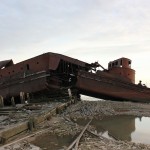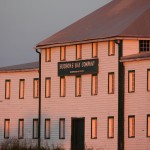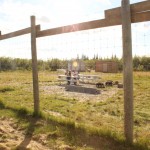Search for the Lost Warships of the 1697 Battle of Hudson Bay
Click Here To Donate To The Fara Heim Foundation And Come With Us!!
 On our first expedition to Hudson Bay and York Factory we learned of the 1697 Battle of Hudson Bay. It is an amazing story that, while seemingly not connected to our search for Norse exploration in North America, is an amazing historical event. Captain Pierre Le Moyne D’Iberville was a Canadian born in the French settlement of Montreal (then Fort Ville-Marie). His father was from Dieppe, Normandy, France and acknowledged that his ancestors were Norse. D’Iberville played an important part in forming North America and he was the first to find the mouth of the Mississippi, founded Baton Rouge and Biloxi. His brother, on Le Pelican during the battle, went on to found New Orleans. Later Pierre bought property in Havana, Cuba, fell ill and died. The Battle of Hudson Bay is considered to be one of the top 10 battles in Canada and Pierre is considered one of the greatest soldiers in Canadian history.
On our first expedition to Hudson Bay and York Factory we learned of the 1697 Battle of Hudson Bay. It is an amazing story that, while seemingly not connected to our search for Norse exploration in North America, is an amazing historical event. Captain Pierre Le Moyne D’Iberville was a Canadian born in the French settlement of Montreal (then Fort Ville-Marie). His father was from Dieppe, Normandy, France and acknowledged that his ancestors were Norse. D’Iberville played an important part in forming North America and he was the first to find the mouth of the Mississippi, founded Baton Rouge and Biloxi. His brother, on Le Pelican during the battle, went on to found New Orleans. Later Pierre bought property in Havana, Cuba, fell ill and died. The Battle of Hudson Bay is considered to be one of the top 10 battles in Canada and Pierre is considered one of the greatest soldiers in Canadian history.
In 1697 Captain Pierre Le Moyne D’Iberville engaged three ships at York Factory on Hudson Bay in Manitoba, Canada. The 118 ft, 50 gun Le Pelican attacked the 118 ft, 46 gun HMS Hampshire, the Hudson Bay Company (HBC) Royal Hudson’s Bay, and the HBC Dering. After a length naval battle the HMS Hampshire was sunk with all hands lost, Le Pelican was beached to avoid sinking, and the Royal Hudson’s Bay was captured and then lost in a storm. The ships have never been found but artifacts have washed ashore over the centuries.
Le Pelican- Captain Pierre Le Moyne D’Iberville – Canadian
HMS Hampshire – Captain Fletcher – English
HBC Royal Hudson’s Bay – Captain Smithsend – English
(another ship was involved but it escaped: HBC Dering – Capt Grimington) – English
If you would like to participate as an Adventurer with Purpose with the Fara Heim Foundation contact us for more information.
Departing from Gillam, Manitoba we will travel down the Nelson River, head into Hudson Bay to go around Marsh Point, and stay at our basecamp at York Factory.
The Nelson River includes several historic sites, local wildlife, and the changing geography of Hudson Bay:
1. A stop at Seal Island where Thomas Button wintered in 1612 during his search for Henry Hudson
2. Port Nelson, the site of a billion dollar ghost port
3. Stops at multiple 20th century shipwrecks 4. Close viewing of polar bears, belugas, and many birds
5. Search Hayes River island for the 1680s camp of Pierre Radisson
At York Factory we will stay in a very secure polar bear enclosure (to keep the bears out) in expedition style (i.e. tents). Days will be busy helping the search team on land and sea search using drones, magnetometers, and good old fashioned eyeballs.
While on the expedition we will be on Marsh Point where polars bears are waiting for the winter ice to return, search for the three lost warships on land and sea, journey up the Hayes River to see the effect of isostatic rebound and river erosion, visit the last building at York Factory, and enjoy evenings in the Canadian wilderness watching the Northern Lights.
Please email David at david@faraheim.com or call at 262-960-2959.
















